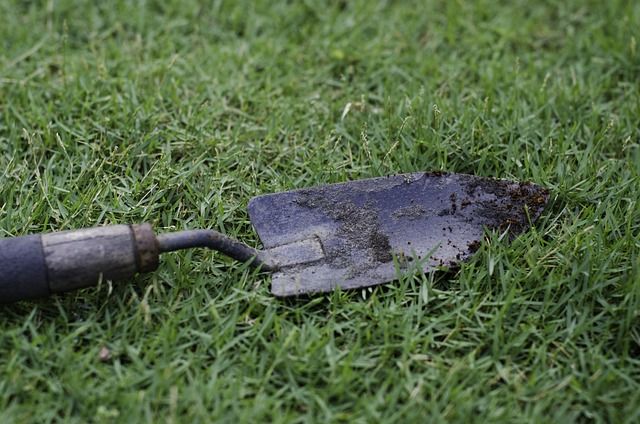Rootzone depth is a critical factor that affects the growth and health of plants. Determining the ideal depth for rootzone is crucial in ensuring that plants and grass have enough space to grow roots and have access to water and nutrients.
In this article, we will discuss how deep rootzone should be, the factors that influence the ideal depth, and how to determine the optimal depth for different plants and grass.
Contents
What is Rootzone?
The rootzone is the area in soil or growing media where plant roots grow and interact with the soil. It is the zone where the majority of nutrient uptake occurs.
Typically, rootzone is made up of different layers, including topsoil, subsoil, and parent rock. The depth of the rootzone varies depending on the type of plant and soil conditions in your garden or sports facility.
Learn more about Rootzone Soil here.
The Importance of Rootzone Depth
The depth of the rootzone determines how much space the roots have to grow and how much water and nutrients they can access. When the rootzone is too shallow, plants and grass may experience water stress, nutrient deficiency, and poor growth.
On the other hand, if the rootzone is too deep, plants and grass may have difficulty accessing water and nutrients, leading to poor growth and reduced yields.

Factors that Influence Rootzone Depth
1. Soil Type
One of the main factors that influence rootzone depth is the type of soil that is already there. Different soil types have varying characteristics, such as water-holding capacity, aeration, and nutrient availability, which determine the depth of the rootzone.
For instance, sandy soils have a shallow rootzone because they do not hold water for long, while clay soils have a deep rootzone because they are better at holding water.
2. Plant Species
Different plant species have different rootzone depths, which are determined by their natural environment and growth habits. For example, plants with shallow roots, such as grass, have a shallow rootzone, while trees have a deep rootzone.
Moreover, some plants have different rootzones during different stages of growth, such as annuals, which have a shallow rootzone during the initial stages, and deeper rootzones during the later stages.
3. Climate
The climate is another factor that plays a crucial role in determining the rootzone depth. In areas with high rainfall, the rootzone depth is shallow because the soil is well-drained, while in arid areas, the rootzone is deep because the soil is dry and can hold more water.
Temperature is also important since it affects the rate of plant growth, and hence the depth of the rootzone.
4. Water Availability
Water is essential for plant growth, and the rootzone depth is dependent on the availability of water. In areas with high water availability, plants have a shallow rootzone since they can easily access water from the soil surface.
However, in areas with low water availability, plants have a deep rootzone to access water deep in the soil.
5. Nutrient Availability
Nutrient availability is also a critical factor that determines the rootzone depth. In areas with high nutrient availability, plants have a shallow rootzone, while in areas with low nutrient availability, plants have a deep rootzone to access nutrients deep in the soil.
Additionally, some plants have different rootzones to access different nutrients. For example, corn has a shallow rootzone to access nitrogen, while alfalfa has a deep rootzone to access water and other nutrients.
6. Human Activities
Human activities such as land clearing, soil compaction, and irrigation practices can also influence the depth of the rootzone. Land clearing, for example, can expose deeper layers of soil, increasing the rootzone depth.
Soil compaction can decrease the rootzone depth by reducing soil porosity, while irrigation practices can either increase or decrease the rootzone depth depending on the amount and frequency of water application.
How to Determine the Ideal Rootzone Depth
Determining the ideal depth of the rootzone requires careful consideration of the factors listed above. Here are some general guidelines for determining rootzone depth:
- For most plants, the rootzone should extend to a depth of at least 30 cm or 11 inches
- Plants with deeper root structures, such as trees, may require a deeper rootzone to ensure optimal growth, especially out of the growing season.
- Shallow-rooted plants may require a shallower rootzone, depending on soil conditions and water availability.
- If the soil is compacted or has poor drainage, the rootzone may need to be shallower to ensure that plants have enough oxygen to grow.
Whether you’re a seasoned gardener or just starting, understanding the root zone and its depth is essential to ensure healthy and thriving plants.
By following the tips and guidelines in this article, you’ll be able to determine the ideal depth for the root zone of your plants and maintain healthy root zones for years to come.
Where to Buy Rootzone Soil?
At Alsoils, we provide a wide range of Sports Rootzone products that are ideal for use in various sports fields such as golf courses, football, and rugby pitches.
Our unique blend of materials is specifically crafted to encourage strong root growth and to create the best possible playing conditions for athletes.





